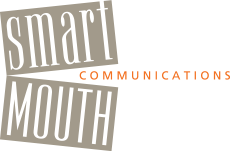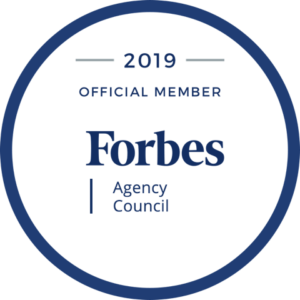by Beth Levine | Oct 6, 2011 | smartmouth talks!
Introducing SmartMouth Communications “Need a Consult?” button.
If you need a second pair of eyes on a speech or presentation; if you need someone to write or rewrite your opening or closing; if you need input or feedback on your slides; or if you simply need to talk through your ideas with a trusted consultant, give us a shout!
by Beth Levine | Oct 4, 2011 | Just Mouthing Off
That’s what a lot of presenters make their audiences do … work. Work to sift through heaps of detail and information. Work to make sense of dense, complex material. Work to follow along. Work to figure out the point …
If you are the presenter, you should do the heavy lifting for your audience. It’ll pay off; the audience will appreciate you, have a good impression of you, and, most important, they will understand and remember what you said!
So here are 3 tips on the kind of “work” you can do so your audience can sit back and absorb, then leave the room satisfied:
Provide guidance. Identify what it is you want your audience to think, know, do, or feel about your presentation. Then weave that into your opening and closing. The mere power of suggestion has a lot of power indeed.
Eliminate waste. Cut out extra detail and information just because it’s interesting to you or because it’s so cool you just have to share it. Be selective with your detail and info. Your audience can digest and retain only so much.
Narrate. Let your audience know where you are, what you’re doing, and where you’re going during the presentation. If you tell them you’re going to cover three main points, let them know when you’ve moved on to the next point. When you’re diverting to a quick sidebar, or you’re backtracking, or you’re stopping to tell a funny story, tell them that’s what you’re doing so they can follow along appropriately.
Audiences don’t want to work. But they do want to get it. If you do the work, you’ll get the reward … your audience’s attention and respect!
by Beth Levine | Sep 19, 2011 | Just Mouthing Off
Self-discipline.
Even just a little bit of self-discipline can make a big difference in a meeting or presentation. Here’s a 5-point checklist for you to consider while keeping yourself in check:
- You can’t cover everything, so don’t try. Be selective and prioritize.
- No one is as interested in what you have to say as you are … unless, of course, it pertains directly to them! It’s all about them.
- Observing the boundary of a time allotment shows respect, restraint, and command. Going over a time allotment shows the opposite.
- Winging it is not cool. Winging it is simply the intersection of avoidance and false hopes. You’re better than that, so prepare.
- And above all, take a second to identify what it is that you want your audience to think or know or do at the end. If you’re not solid with the takeaway, how can you expect them to be?
by Beth Levine | Sep 6, 2011 | Just Mouthing Off
Ever wonder how to get a group of adults to pay attention and stay engaged? Have you ever tried toys, crayons or games? You should, it can totally change the dynamics in the room … in your favor!
It never ceases to amaze me how quickly I can transform a room of “hostages” – i.e. adult participants in a training they didn’t exactly beg to attend! – into a room of giddy “vacationers” just by engaging them in a game. Or by leaving crayons and paper on the table. Or by putting Slinkys, squishy balls, Rubik’s Cubes and even candy in the middle of the table.
Talk about unspoken messages! Toys, games, and candy are the language of fun, of childhood, and they loosen people up. Studies have been conducted, showing that adults will be more open and even more honest when sitting in an environment that stimulates their inner child. Whether those studies are conclusive or not, I can tell you from my own anecdotal experience that adding elements of “child’s play” in a meeting, presentation, or group training sends the message that you expect your audience to have fun, to occupy their hands, to need stimuli, and that you’re okay with it.
Try it and see. You might just find a group of fully grown adults warming up to you a lot faster than you expected and a lot easier than usual!
by Beth Levine | Aug 30, 2011 | Just Mouthing Off, quote
I am not young enough to know everything.
– Oscar Wilde
We never know everything. We never will. Even experts get stumped. There are a lot of great questions. Yet so many people say, “I get so nervous before a presentation because I’m afraid I’ll get asked something I don’t know.“ So?
What you get asked can’t hurt you. What you say in response can. Be comfortable in not knowing something, it’s human. Be ready to openly admit it and offer to help find the answer, or to help find someone who knows the answer. It’s more authentic, and therefore more appealing. Even subject matter experts explore with, and learn from, their audiences. And it’s best when the presenters are completely transparent about their limitations; trying to cover up or make something up is also quite transparent, so don’t go there and risk compromising your credibility unnecessarily.
Just because you’re the speaker does not automatically mean you’re omniscient. “I don’t know, I can find out for you” is a brilliant answer!



